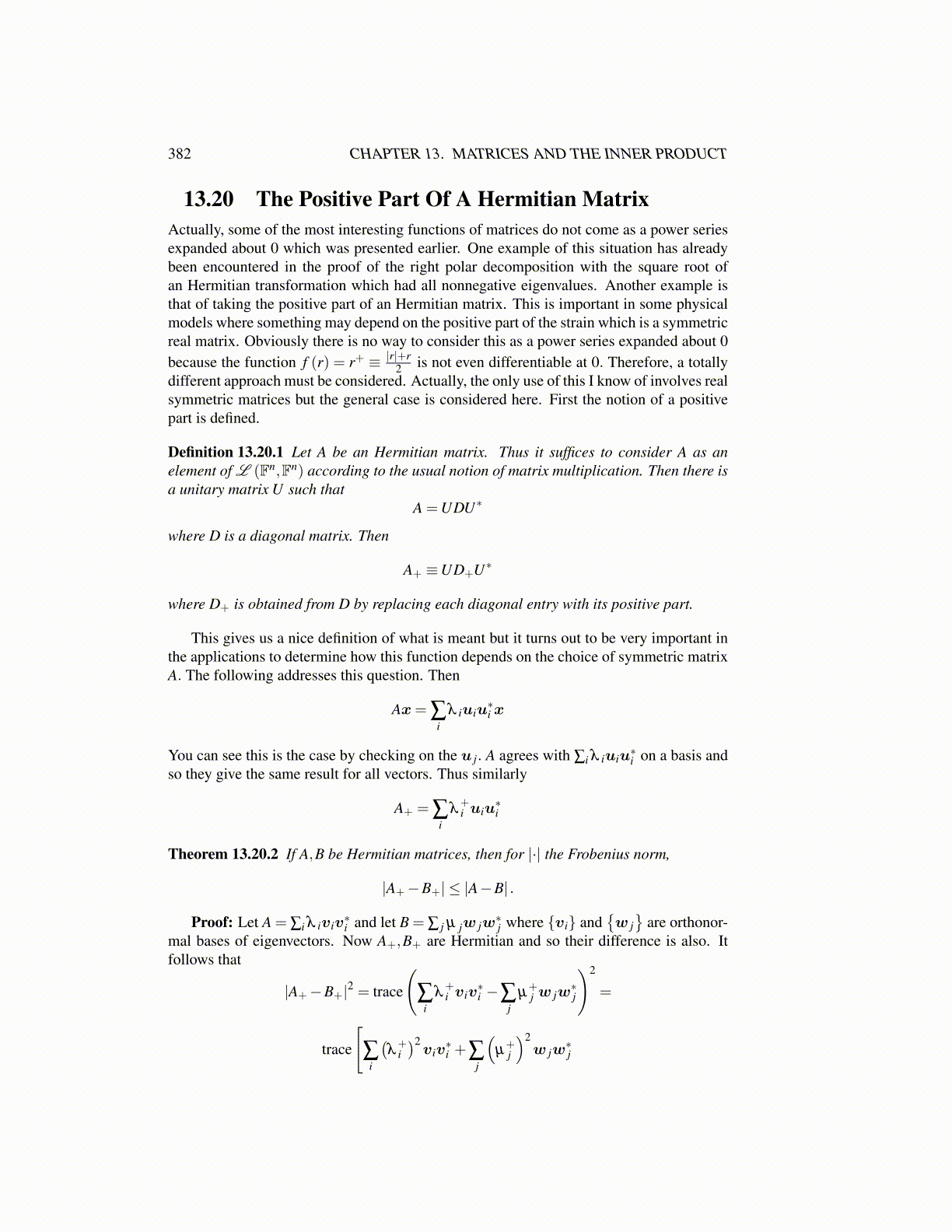
382 CHAPTER 13. MATRICES AND THE INNER PRODUCT
13.20 The Positive Part Of A Hermitian MatrixActually, some of the most interesting functions of matrices do not come as a power seriesexpanded about 0 which was presented earlier. One example of this situation has alreadybeen encountered in the proof of the right polar decomposition with the square root ofan Hermitian transformation which had all nonnegative eigenvalues. Another example isthat of taking the positive part of an Hermitian matrix. This is important in some physicalmodels where something may depend on the positive part of the strain which is a symmetricreal matrix. Obviously there is no way to consider this as a power series expanded about 0because the function f (r) = r+ ≡ |r|+r
2 is not even differentiable at 0. Therefore, a totallydifferent approach must be considered. Actually, the only use of this I know of involves realsymmetric matrices but the general case is considered here. First the notion of a positivepart is defined.
Definition 13.20.1 Let A be an Hermitian matrix. Thus it suffices to consider A as anelement of L (Fn,Fn) according to the usual notion of matrix multiplication. Then there isa unitary matrix U such that
A =UDU∗
where D is a diagonal matrix. Then
A+ ≡UD+U∗
where D+ is obtained from D by replacing each diagonal entry with its positive part.
This gives us a nice definition of what is meant but it turns out to be very important inthe applications to determine how this function depends on the choice of symmetric matrixA. The following addresses this question. Then
Ax= ∑i
λ iuiu∗i x
You can see this is the case by checking on the u j. A agrees with ∑i λ iuiu∗i on a basis and
so they give the same result for all vectors. Thus similarly
A+ = ∑i
λ+i uiu
∗i
Theorem 13.20.2 If A,B be Hermitian matrices, then for |·| the Frobenius norm,
|A+−B+| ≤ |A−B| .
Proof: Let A = ∑i λ iviv∗i and let B = ∑ j µ jw jw
∗j where {vi} and
{w j}
are orthonor-mal bases of eigenvectors. Now A+,B+ are Hermitian and so their difference is also. Itfollows that
|A+−B+|2 = trace
(∑
iλ+i viv
∗i −∑
jµ+j w jw
∗j
)2
=
trace
[∑
i
(λ+i)2viv∗i +∑
j
(µ+j
)2w jw
∗j